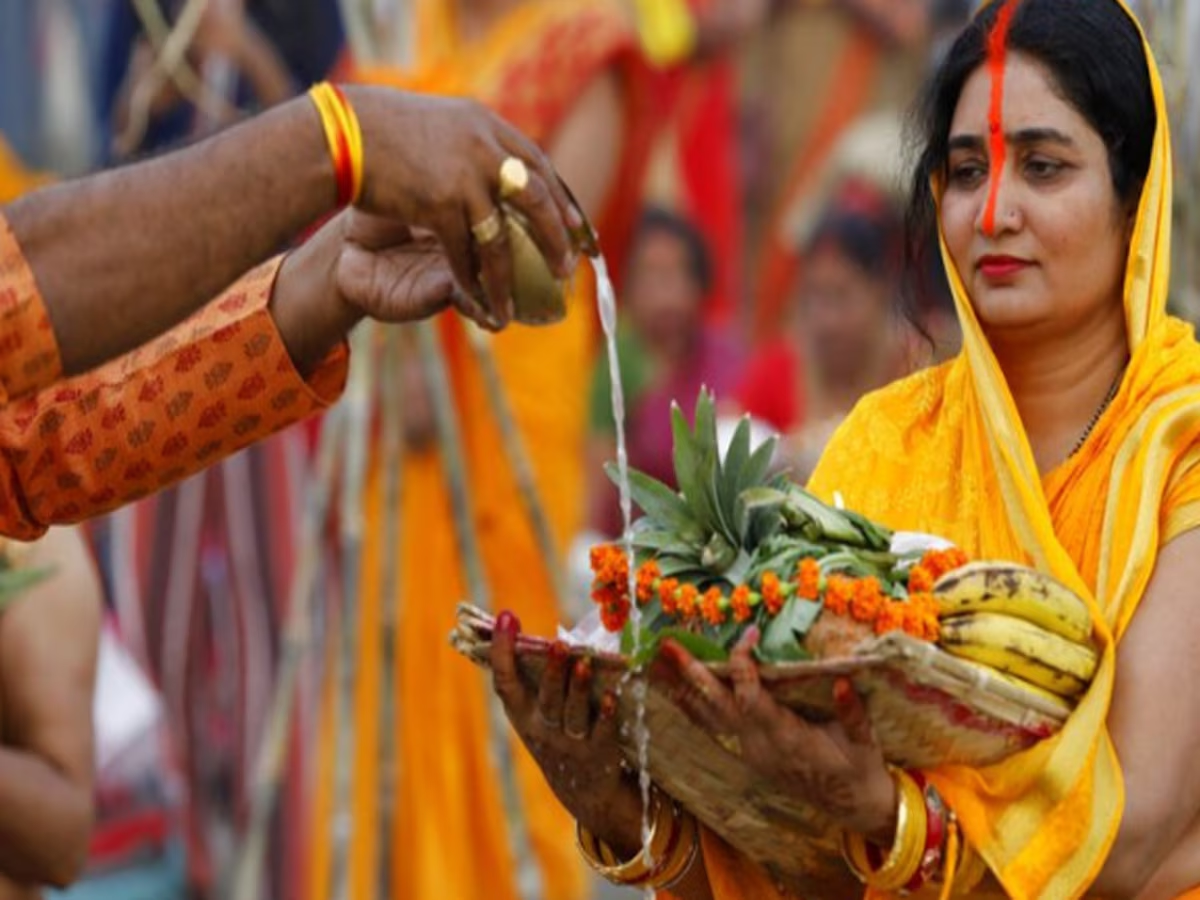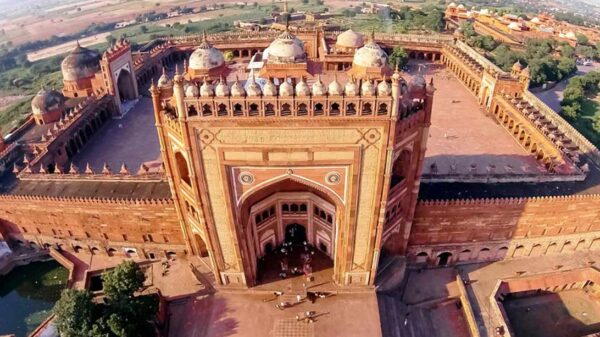Bihar is a state with many diverse complexities, where historical essence still imbues moral and ethical values among Indians. In this blog, I will discuss the true culture of Bihar, particularly the Chhath festival (Chhath Puja), which possesses its own unique glory. While travelling to a place and enjoying its magnificent views is one aspect, experiencing a place’s genuine culture is a fascinating endeavour that every traveller should undertake at least once in their lifetime.
The Chhath Mahaparv of Bihar is something beyond explanation; the aura and auspiciousness of this festival are renowned worldwide. Experiencing it through your soul and body is a profound encounter.
Chhath is an ancient festival celebrated in Bihar, Uttar Pradesh, and some parts of Nepal. However, the true mystical essence of this festival can be truly experienced in Bihar.
It involves the worship of the Sun god and his wife, Usha, as a way to express gratitude for sustaining life on Earth and to seek the blessings of the divine Sun god and his consort. In Hindu tradition, it is believed that the sun has the power to heal various health conditions and bestow longevity, progress, positivity, prosperity, and overall well-being.
The most significant day of Chhath is not the first but the third day of Chhath Puja. This festival involves a rigorous four-day routine, encompassing fasting, offering prayers to the rising and setting sun, taking holy baths, and meditating while standing in water. It is one of India’s renowned festivals, celebrated not only in Bihar but also in various other regions across the country, such as Jharkhand, eastern UP, Madhya Pradesh, Uttar Pradesh, Bangalore, Chandigarh, Gujarat, Chhattisgarh, and parts of Nepal. Chhath is observed on the sixth day of the Karthika month in the Vikram Samvat.
While Chhath Puja is also celebrated during the summer after Holi, the one celebrated in the Kartika month holds greater significance and is ardently observed by people. Many individuals living away from their hometowns travel in large numbers to participate in this festival.
Chhath Puja History

Chhathi Maiya, the sixth manifestation of Devi Prakriti and the sister of Lord Surya, is venerated as the Goddess of the Chhath festival. This festival is celebrated on the sixth day of the lunar month of Kartika (October-November) in the Hindu calendar Vikram Samvat, which falls six days after Diwali.
The Chhath festival, centred around the worship of Chhathi Maiya, has its origins in the ancient Brahma Vaivarta Purana and is believed to have been established by the Gahadavala dynasty in the sacred city of Varanasi. In the Munger region, it holds a special association with Sita Manpatthar, especially the Sitacharan temple, where it is believed that Goddess Sita first observed the Chhath festival, marking its inception and subsequent grand celebrations in Munger and Begusarai.
Another legend tells the story of King Priyavrat, the son of the first Manu Swayambhu, who, after a yajna, received a blessing from Mata Shashthi, also known as Chhathi Maiya, recognized as the sixth form of Devi Parvati. This event is considered the catalyst for the global celebration of the Chhath festival.
The Chhath festival finds mention in both major Indian epics. In the Ramayana, after Rama and Sita’s return to Ayodhya, they celebrated Diwali, and on the sixth day, Sita performed Surya Shashthi/Chhath Puja, leading to her being blessed with sons, Lava and Kush.
In the Mahabharata, Kunti is said to have observed Chhath Puja, particularly to conceive Karna, the son of Surya and Kunti. Draupadi is also believed to have performed this puja for the Pandavas to gain success in the Kurukshetra war.
How is it celebrated?

The grand preparation for Chhath Puja begins the day after Diwali, and it spans four days. The true purity of this festival becomes evident when you witness it firsthand. All houses are meticulously cleaned, and shopping for Chhath essentials is in full swing. Streets are bustling with local fruit sellers, and stalls are set up for the necessary items required for Chhath Puja. When you step off the road, the beauty lies in its organized chaos. People of all ages, including young children, are excited about this festival. The freshness in the air and the beauty of the crowds during this time create unforgettable memories. Moreover, the heartwarming part is that every shop directly or indirectly contributing to the festival cleans its premises and provides free products to those in need.
First Day of Chhath Puja:
The first day is known as ‘Naha Kha.’ It marks the beginning of the festival, where fasting individuals must take a bath, not with regular water, but in the Ganga river. Afterward, they consume specific dishes prepared on a clay stove made from soil and cow dung. The fasting person has a meal consisting of bottle gourd, tortilla, and curd before other family members who aren’t fasting can eat.
Lohanda or Kharna:
The second day of Chhath Puja involves devotees fasting throughout the day, concluding their fast shortly after sunset. An essential ritual on this day is the preparation of offerings like kheer, bananas, and rice for the family after worshiping the Sun and the Moon. After consuming the prasad, one must fast for 36 hours without water.
Day 3 – Sandhya Arghya (evening offerings):
On the third day of Chhath Puja, fasting without water continues, and the day is devoted to preparing puja offerings. These offerings (prasad) are then arranged in a bamboo tray, including thekua, coconut, bananas, and other seasonal fruits. The evening rituals of the third day take place at the banks of a river, pond, or any clean water body, where all devotees offer ‘arghya’ to the setting sun.
On the last day of Chhath Puja, devotees gather by the river or water body to offer prayers and prasad to the rising Sun. After these offerings, devotees break their fast by consuming ginger, sugar, or locally available food. This marks the conclusion of this remarkable festival.
Interesting & Unique Facts Associated with Chhath Puja:
- Chhath Puja is the only Vedic Festival celebrated in India.
- It is associated with Hindu epics like the Ramayana and Mahabharata, involving characters from both.
- All the rituals of Chhath Puja have scientific reasons, representing a rigorous scientific process for detoxification.
- The rituals of Chhath Puja are designed to optimise the absorption of calcium and vitamin D, especially beneficial for women.
- Chhath Puja helps boost the body’s immunity.
- The festival has mental benefits, calming the minds of devotees and reducing negative energy like hatred, fear, and anger.
- The custom of offering prayers to the Sun god was also present in Babylonian and ancient Egyptian civilizations.
- It is said that individuals who fast for 36 hours emit a powerful aura, and those who touch their feet can absorb this energy, which is why it’s common to touch their feet.

How to reach Patna?
To reach Patna, India, you can use various modes of transportation:
By Air: You can fly to Jay Prakash Narayan International Airport (PAT) in Patna from major Indian cities and some international destinations. Once you arrive at the airport, you can take a taxi or other local transportation to reach your desired destination in Patna.
By Train: Patna Junction is a major railway station and is well-connected to various parts of India. You can book a train ticket to Patna from your departure point. Check the train schedules and availability, and plan your journey accordingly.
By Bus: Patna is also accessible by road. You can take a bus from nearby cities or states. The condition of the roads and travel time may vary, so it’s a good idea to check with local bus operators or travel agencies for the latest information.
By Car: If you prefer to drive, you can use your own vehicle or rent one. Ensure that you have a valid driver’s license, and be prepared for the road conditions and traffic in the region.
By Boat: If you are travelling from regions along the Ganges River, there are ferry services that can take you to Patna.
Make sure to plan your journey based on your location, budget, and preferences. It’s advisable to check the current transportation options and routes.
Some special tips
Respecting their culture is essential, as it may differ from your own, but the beauty of their festival is truly mesmerising. Enjoy and embrace its true essence
Final thoughts – Chhath Puja
In conclusion, I wanted to change the way people think about this festival. Chhath is not only a significant cultural event but also a major attraction for tourists. I strongly believe that everyone should experience it at least once in their lifetime.
The beauty of Chhath is truly captivating. When families come together to make prasad at night and adorn their homes with beautiful lights, they stay awake for two days, fully immersed in the festival. Once you’ve experienced Chhath, you can’t help but be touched by its beauty, essence, and tranquillity.
Whether you’re a travel enthusiast or someone eager to learn about different cultures, Chhath Puja in Bihar is a must-visit. It offers a unique and enriching experience that leaves a lasting impact.
Travel is the only thing you buy that makes you richer. Travel with us.











